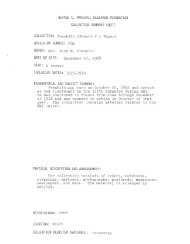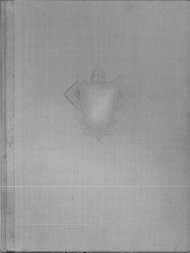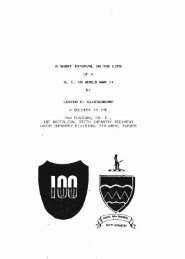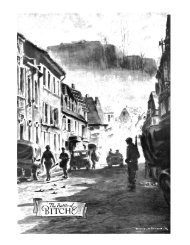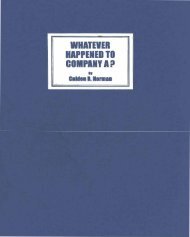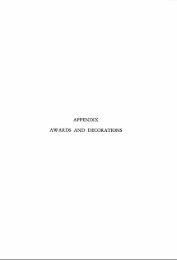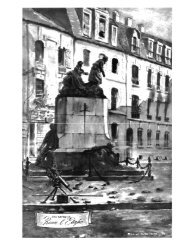Joint Operating Concept (JOC) - GlobalSecurity.org
Joint Operating Concept (JOC) - GlobalSecurity.org
Joint Operating Concept (JOC) - GlobalSecurity.org
Create successful ePaper yourself
Turn your PDF publications into a flip-book with our unique Google optimized e-Paper software.
aligning with the Americans and the insurrection effectively came to a close.<br />
Perhaps better than other historical references, the Philippine counterinsurgency<br />
clearly exemplifies an intervention force working multiple LOOs concurrently.<br />
The “Banana Wars” (1915 - 1934). During the period between the Philippine<br />
Insurrection and the Second World War, the US Marine Corps was engaged in<br />
what are now referred to as the “banana wars.” Marines were extensively<br />
involved in counterinsurgent operations in Haiti, the Dominican Republic, and<br />
Nicaragua, to name just a few. 30 With many of these operations akin to<br />
constabulary duty, the Marine Corps learned how to work effectively with<br />
indigenous paramilitary forces and among indigenous peoples. The Marines<br />
were comfortable working in small units in extremely remote locations with<br />
limited or vague guidance. That observation is not an indication that these<br />
operations were executed in some disjointed, haphazard manner. On the<br />
contrary, the Marine leaders involved held a clear vision of success and a<br />
purpose, and worked according to that vision. In a true sense, the Marine Corps<br />
at that time had a small wars ethos.<br />
The Malaya “Emergency” (1948 - 1960). Following the Second World War,<br />
Malaya was a British colony that experienced a communist-inspired insurgency.<br />
The insurgents’ primary goal at the beginning of the conflict was to cause<br />
maximum disruption of the country’s economy and administration. 31 In<br />
response, the British counterinsurgent strategy in Malaya consisted of three<br />
parts (or phases): (1) Defensive, when the adversary was prevented from taking<br />
over and the insurgency was kept from escalating; (2) Offensive, during which<br />
they broke the insurgent’s ability to win; and (3) Victory, in which they hunted<br />
down and destroyed the communist insurgents and established an independent<br />
Malaya. The British counterinsurgency effort was able to separate the<br />
insurgents from the people and wear them down by chasing them into remote<br />
jungle areas and occasionally killing them. Without the support of the people,<br />
the guerrillas found that their struggle had been undermined. 32 The British,<br />
following the defeat of the insurrection, worked with the fledgling Malay<br />
government to help them build the capacity to govern. The process took some<br />
time because it involved educating and training a generation of leaders and<br />
developing the infrastructure on which to function. The military moved<br />
seamlessly from the purely military tasks to these new challenges.<br />
The Algerian Insurrection (1954 - 1962). The insurgents in Algeria forced<br />
the French army to fight essentially two different wars. On one hand, due to the<br />
physical security threat, they challenged the French military to maintain<br />
stability, which forced the French military to bring in a large conventional force<br />
and to garrison key populated areas. These forces were largely immobilized. The<br />
30 Larry Cable, Conflict of Myths: The Development of American Counterinsurgency Doctrine and<br />
the Vietnam War, (New York, NY: New York University Press, 1986), p. 96.<br />
31 Walter Laqueur, Guerrilla: A Historical and Critical Study, (Boston, MA: Little, Brown, 1976) p.<br />
289.<br />
32 Laqueur, p. 290.<br />
Appendix G<br />
G-2




